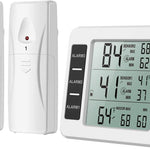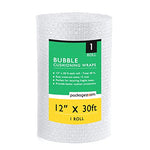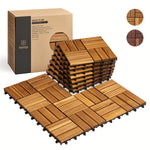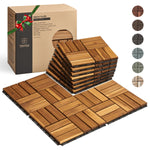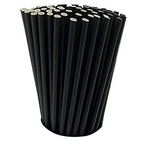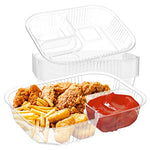You have no items in your shopping cart.
As a professional chef, home cook, or food service worker, it is important to ensure that your kitchen tools are clean and sanitary. A knife is an essential tool in any kitchen, but when must a knife be cleaned and sanitized? In this article, we will discuss the importance of knife sanitation, how often a knife should be cleaned, and tips for proper knife cleaning and sanitizing.
Importance of Knife Sanitation
A knife that is not cleaned and sanitized properly can lead to the spread of harmful bacteria and viruses. These pathogens can cause foodborne illnesses, such as Salmonella and E. coli, which can be dangerous and even deadly. In addition to the risk of illness, a dirty knife can also affect the taste and quality of the food being prepared.
How Often Should a Knife be Cleaned?
A knife should be cleaned and sanitized after each use. This includes between different types of foods, such as raw meat and vegetables, and between different tasks, such as cutting and peeling. It is important to clean the blade, handle, and any other parts of the knife that come into contact with food.
Tips for Proper Knife Cleaning and Sanitizing
Step 1: Clean the Knife
The first step in proper knife cleaning is to wash the knife with hot, soapy water. Use a sponge or brush to scrub the blade, handle, and any other parts of the knife that come into contact with food.
Step 2: Rinse the Knife
After cleaning the knife, rinse it thoroughly with hot water to remove any soap residue.
Step 3: Sanitize the Knife
To sanitize the knife, use a solution of water and bleach, or a commercial sanitizer. Follow the manufacturer's instructions for the correct dilution and contact time.
Step 4: Dry the Knife
Once the knife has been sanitized, allow it to air dry or dry it with a clean towel. Avoid using a cloth towel, as this can transfer bacteria and other pathogens to the knife.
Frequently Asked Questions (FAQs)
Q1: Can I clean my knife in the dishwasher?
A: While some knives are labeled as dishwasher safe, it is generally not recommended to clean knives in the dishwasher. The high heat and harsh detergents can damage the knife, and the knife may become dull over time.
Q2: How do I know if my knife is properly sanitized?
A: To ensure that your knife is properly sanitized, use a test strip to measure the concentration of the sanitizer solution. The strip will change color if the solution is at the correct concentration.
Q3: Can I use vinegar to sanitize my knife?
A: While vinegar is a natural disinfectant, it is not recommended for use in sanitizing knives. Vinegar can cause the blade to corrode and may leave a strong odor.
Q4: Do I need to sanitize my knife if I only use it for cutting vegetables?
A: Yes, it is still important to sanitize your knife even if you only use it for cutting vegetables. Bacteria and other pathogens can still be present on the knife and can cause cross-contamination if not properly sanitized.
Q5: Should I oil my knife after cleaning it?
A: It is a good idea to apply a small amount of oil to the blade of the knife after cleaning and sanitizing it. This will help to prevent rust and keep the blade in good condition.
Q6: How often should I sharpen my knife?
A: The frequency of knife sharpening depends on how often the knife is used. In general, it is recommended to sharpen a knife every three to six months. However, this can vary depending on the type of knife, how often it is used, and the tasks it is used for.
Conclusion
Proper knife sanitation is essential for ensuring that your food is safe and healthy to eat. A knife should be cleaned and sanitized after each use, and it is important to clean all parts of the knife that come into contact with food. Remember to use hot, soapy water to clean the knife, and a sanitizer solution to properly sanitize it. By following these tips, you can help prevent the spread of harmful bacteria and viruses in your kitchen.
Top Picks For Trash Bag
Introducing our 15 Gallon Tall Kitchen Bags! These bags are perfect for everyday kitchen waste and feature a strong and reliable design.
"These bags have made my kitchen cleanup a breeze. Highly recommend them!"
- Emily Jarred
"I've been using these bags for months now, and they never disappoint. Great quality!"
- Michael Anderson
Introducing our 39 Gallon Heavy-Duty Trash Bags! These bags are perfect for handling larger loads of trash and are built to resist tears and leaks.
"These bags are the best I've ever used. They can handle even the toughest trash."
- Lewis Martinez
"I'm impressed by the durability of these bags. They never fail to hold up, even when filled to the brim!"
- Jessica Roberts
Introducing our 33 Gallon Heavy-Duty Trash Bags! These bags are designed to handle heavy loads of trash, making them ideal for residential and commercial use.
"I've never had a bag that could handle so much trash. These bags are a game-changer!"
- Samantha Turner
"I run a small restaurant, and these bags are perfect for our needs. They're strong, reliable, and affordable!"
- David Patterson
Introducing our 55 Gallon Contractor Trash Bags! These bags are designed to handle heavy, bulky trash and are commonly used in construction and renovation projects.
"These bags are an absolute lifesaver on our construction sites. They can handle anything we throw at them!"
- Mark Thompson
"I've used many different contractor bags, and these are by far the best. They never let me down!"
- Rachel Collins







